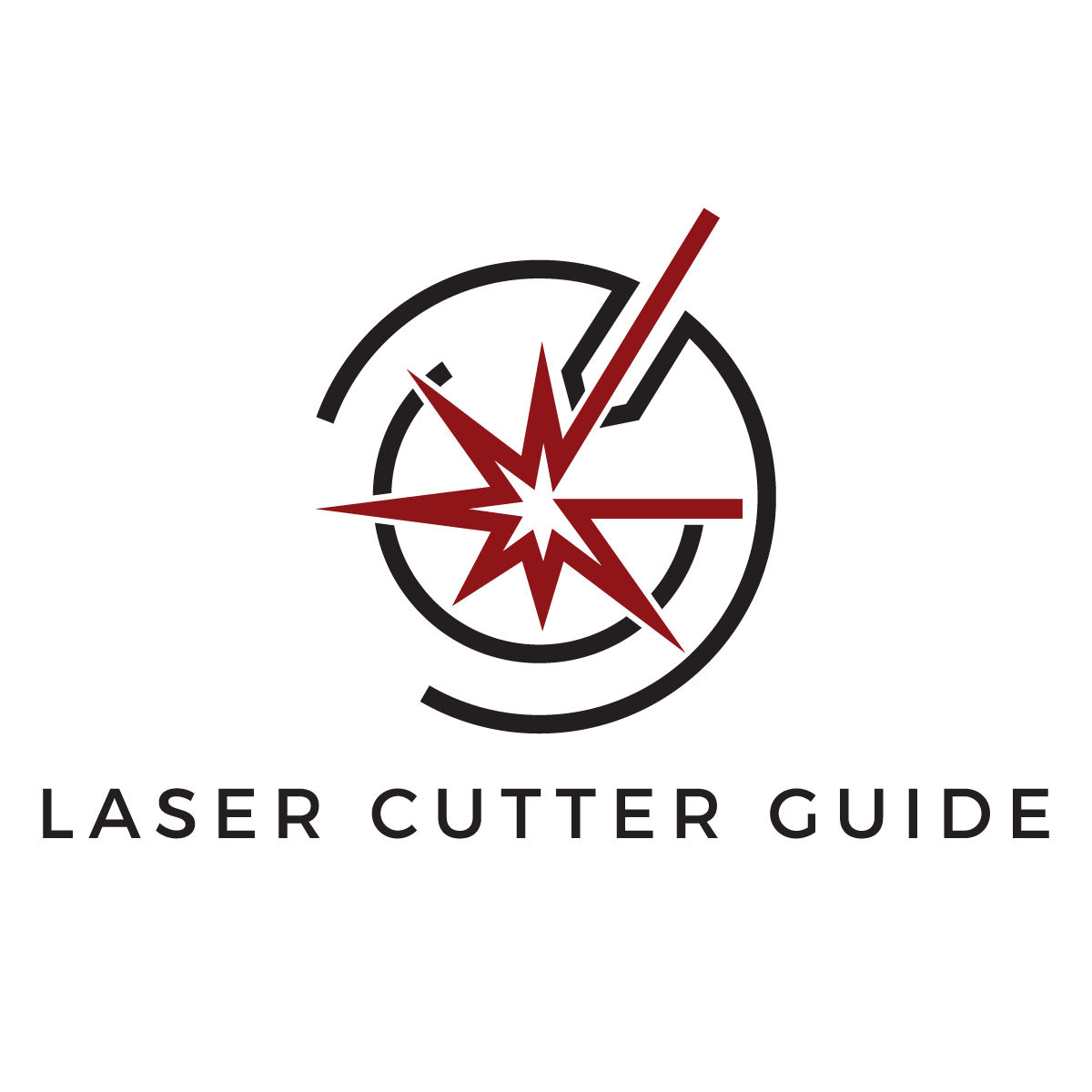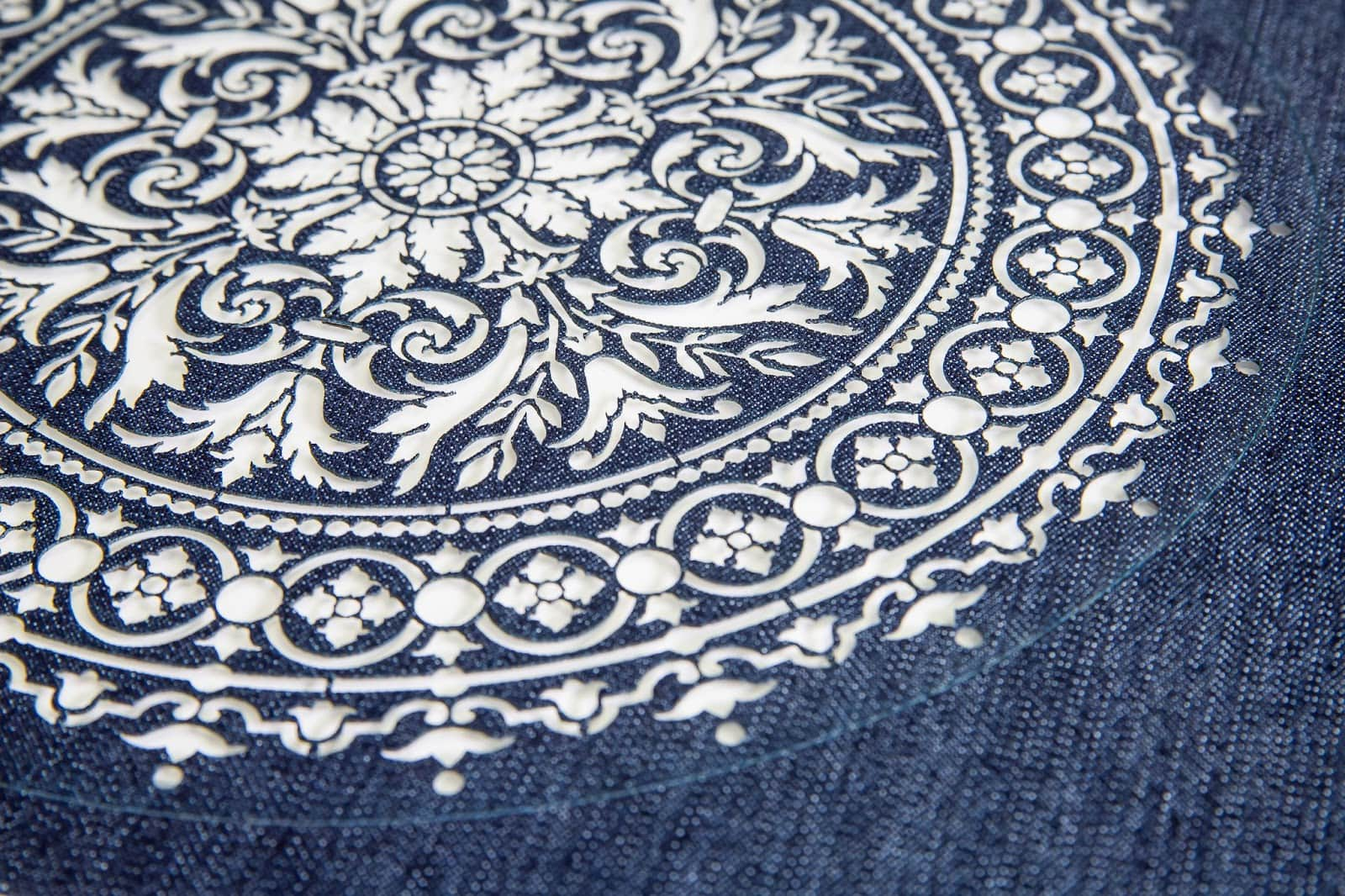Using a laser cutter to produce stencils has, in theory, a few disadvantages. Usually, laser cutting is very fast, accurate, and overall a very good tool. It offers a high degree of repeatability and automatization. However, there are some minor disadvantages when it comes to laser cutting stencils that have to be kept in mind. Firstly, one needs a certain degree of expertise to successfully laser-cut any material. It requires some trial and error as well as practice. Secondly, many laser cutters are quite costly, especially when they must be able to cut through thick metal sheets. Thirdly, plastics have the potential to release harmful gases when laser-cut for the stencils. Therefore, it is very important to check the safety data sheet of the material that must be laser-cut. One must have sufficient airflow and a venting system installed with the laser cutter.
1. Multiple stencils are required for multilayered art.
Multi-layered art is a wonderful thing because it is able to have a plethora of colors and shapes. However, making all the various components is able to be quite laborious when this kind of art is created using separate cutouts. The laser cutting process is very well adapted for this job because of how quickly it works and how precisely it cuts. A suitable laser cutter is able to quickly and efficiently make several stencils in large quantities. Producing templates for art projects is much easier with a laser because it is able to carve a wide range of materials.
2. Producing art with stencils limits color variety in the designs.
The production of artwork that is based on stencils is only able to reach a certain degree of complexity. It is because each layer of the artwork has to be represented by a single stencil. The colors are then applied via those stencils in layers. Each layer has to go on top of the others, and each layer is only able to consist of a single color. It limits the variety of colors for the image that must be created.
3. Pigment or dye media must be firmly attached to the surface to prevent spillage.
Stencils have to have clear-cut edges to avoid the spilling of the color to other areas of the artwork. They must be manufactured very precisely. It is most easily done with a laser cutter. Only with stencils with high precision the intended artwork is going to look as desired.
4. Stencils are costly.
Cutting stencils by hand is a very time-consuming procedure. Hence, those stencils are very costly to produce. It is able to be a major disadvantage for designers and creators. It is even more apparent when the stencil shapes have to be very complicated or accurate. Preparing them by hand requires a high level of skill, a lot of preparation, and a steady hand. Those factors all add to the cost of high-quality stencils. This cost is able to be reduced significantly with a suitable laser cutter. A laser cutter produces stencils with equal quality in a short time. There is also not much preparation necessary. A computer file and maybe some quick test runs are enough. The computer file is as well able to be used an infinite amount of times. It has to be created only once and can be reduced as often as necessary.
5. Making stencils is hard.
Making templates are able to be difficult if an individual is not proficient at it. One slip of the hand is able to render a nice stencil useless, and the work has to start from scratch again. It is able to be easily avoided by using a laser cutter. The model for the stencil is able to be created on the computer and changed until it looks perfect. An unlimited number of templates are able to be made after a few brief tests pass with the laser device. The speed and accuracy are going to be superior to anything made by hand. Thus, a laser cutter is able to facilitate stencil production greatly.
Moreover, there are several methods how to make stencils, but one of the most popular and efficient is to use a laser cutter. There are seven steps, such as creating a design, choosing the material, preparing the material, setting up the laser cutter, loading the design file, and cleaning the stencil.
6. Closed designs must be modified to avoid inner stencil parts from falling out.
It does not matter how simple or complicated a stencil design is. All parts of it have to be connected. It is able to be quite a challenge for a person, especially if the print is intricate or fragile. A computer, on the other hand, is able to ensure this with ease. There is the possibility of changing the stencil during the design phase. One is able to start manufacturing with a computer-driven laser cutter only when the stencil layout is perfect. There is no need for time-consuming trial-and-error processes.
7. Emits dangerous fumes.
One thing that must be kept in mind is that some materials, especially different types of plastics, is abe to emit dangerous fumes when they are laser cut. Coroplast, a type of polyvinyl chloride (PVC), is an example. Laser-cutting PVC must be avoided due to the potentially toxic fumes.
Is it better not to produce stencils with laser cutting?
No, it is better to produce stencils with laser cutting. Laser cutting produces excellent stencils with high quality and at low cost. The production process is very fast and accurate. Thus, laser cutting stencils is one of the best ways to produce them.
Additionally, laser cutting is possibly not the most cost-effective alternative for small-scale stencil manufacturing or basic stencil designs. It is possible that stamping or digital printing is preferable alternatives in these situations.
Consequently, it is essential to take into account the individual needs of the project before determining whether or not to employ laser cutting, which is a flexible and efficient approach for creating stencils. Knowing the Laser Cutting: Definition, Process, and Use are critical in determining if it is better for producing stencils compared to other methods.
What are the advantages of using laser cutting for making stencils?
There are a variety of advantages of using laser cutting to create stencils over other techniques. First, laser cutting is an extremely precise technique that is able to create templates with complex patterns and minute details that are challenging to accomplish with other techniques. The laser cutter uses a digital design file to make exact incisions, resulting in accurate patterns.
Second, laser cutting is a quick process that quickly and effectively produces stencils. Once the design file is inserted, the laser cutter can start cutting immediately, speeding up the process of creating a template. Third, laser cutting ensures consistent results, meaning every stencil is identical. It is crucial to remember if an individual needs to create a lot of templates for a project because it makes sure that they are all uniform.
Fourth, a wide range of materials, including paper, cardboard, plastic, and metal, are able to be cut using laser cutting. It means that an individual is able to choose the material that is best suited for their project and still get the precision and speed that laser cutting provides. Lastly, laser cutting creates precise cuts free of burrs and jagged edges. It is essential if use the stencil to paint or apply other materials, as it ensures that the stencil is going to produce a clean and sharp image.
What is the difference between using and not using a laser cutter for making stencils?
Cutting stencils by hand is very time-consuming and often frustrating. The smallest error is able to make a stencil unusable. A laser cutter, on the other hand, produces stencils in large numbers with excellent quality in a short time. Making stencils by hand requires a high skill level and sometimes several tries. Thus, hand-cut stencils are mostly not as accurate as laser-cut stencils. The laser cutter works much more cost-efficient than other cutting methods. It is very hard to design and cut complicated or delicate forms by hand. A computer-steered laser cutter makes the design process much easier. The file is able to be made, preserved, and used as many times as desired once it is generated. It makes laser-cutting stencils the first choice for stencil production.

